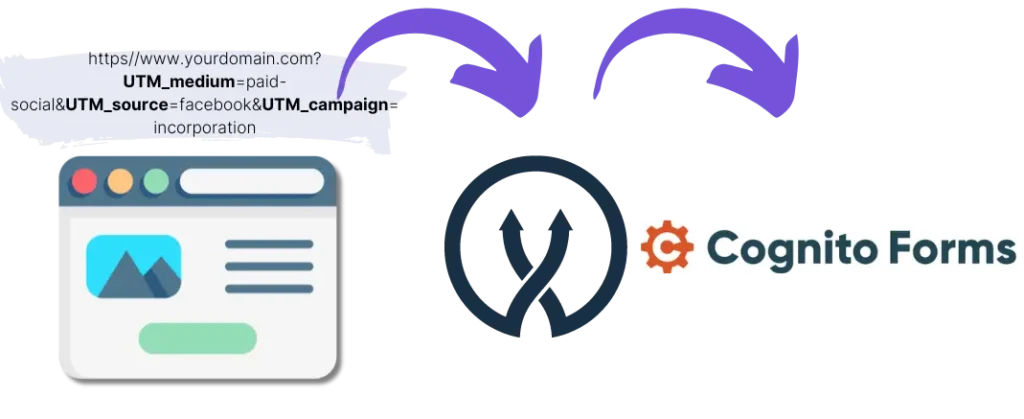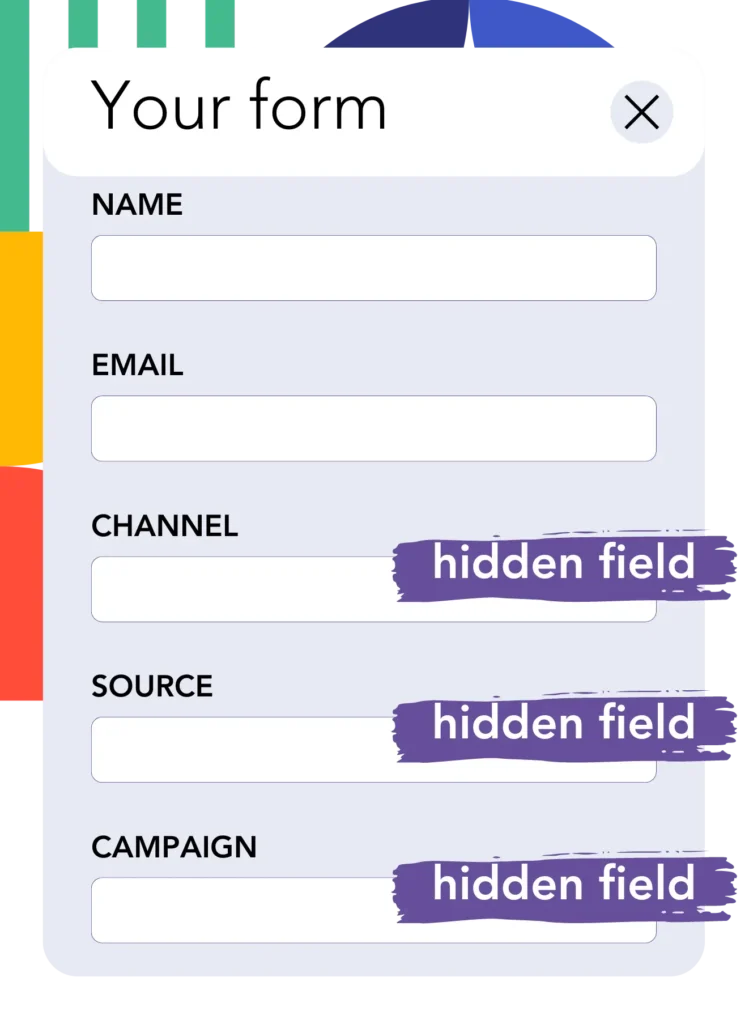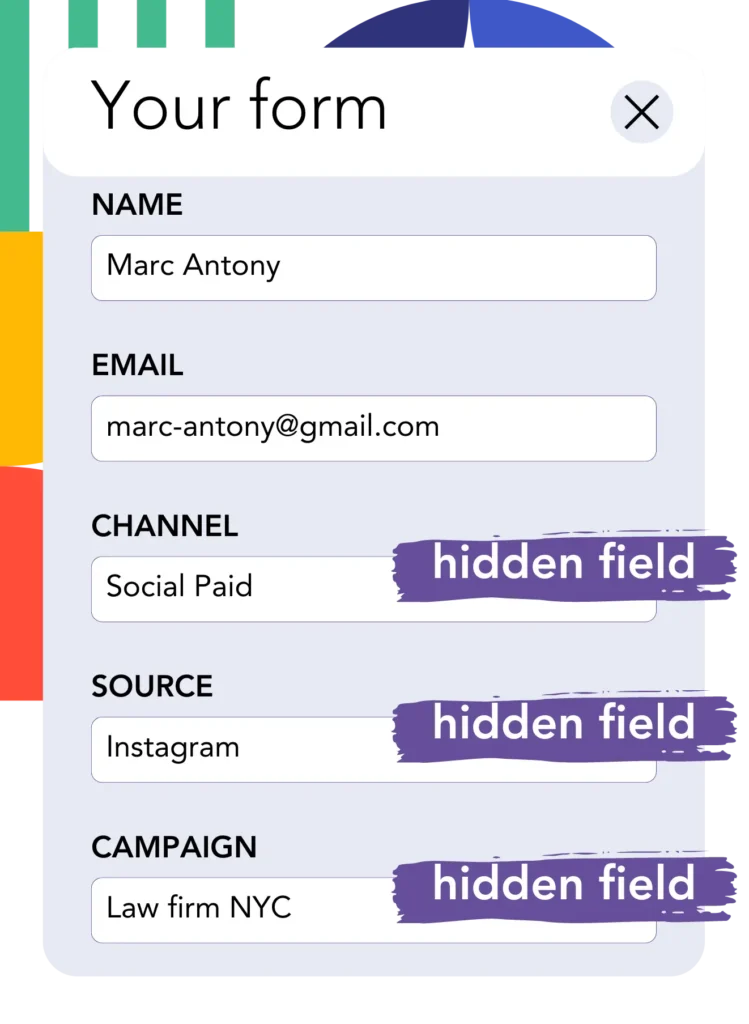Adding UTM tracking to Cognito Forms can be tricky, especially for those without coding experience.
What if there was an easy way to capture UTM parameters into Cognito Forms without any coding?
Discover Leadsources.io!
Leadsources is a lead tracking tool that bridges your UTM parameters and Cognito Forms.

When a visitor clicks on your marketing campaign, Leadsources captures the UTM parameters in your URL.
Leadsources then automatically inserts these UTM parameters into the hidden fields of your Cognito Forms.
You can then view your UTM parameters alongside the lead’s information on Cognito Forms submission page.
Follow this guide to implement UTM tracking in Cognito Forms with Leadsources in 10 minutes, and you won’t need any coding skills.
Implement Cognito Forms UTM tracking in 4 simple steps
Step 1: Add Leadsources to your website’s head tag

Sign up at Leadsources.io and enjoy a 14-day free trial.
Insert the Leadsources code into the head tag of your website. No coding or developers required.
Follow our step-by-step guide to get started.
Step 2: Add UTM parameters to your campaigns

Include the UTM parameters you want to track in all your campaigns (PPC, email, social media, etc.).
Leadsources works with the following UTM parameters:
- UTM_source
- UTM_campaign
- UTM_term
- UTM_content
Leadsources also captures data not included in UTM parameters, such as the channel, landing page, and subfolder.
Step 3: Add hidden fields to your Cognito Forms

When visitors fill out your Cognito Form, they provide personal data in the visible fields (name, email, etc.).
At the same time, Leadsources automatically inserts UTM parameters into the hidden fields of your Cognito Form (channel, source, etc.).
To do this, add hidden fields in Cognito Forms to store your UTM parameters by following this video guide. From Cognito Forms, edit the form you want to modify.
Add Hidden Fields:
- In the form builder, click on the “Add Field” button on the right-hand side.
- Select the “Hidden” field type from the list of field options.
Add the exact following fields one by one:
- channel
- source
- campaign
- term
- content
- landingpage
- landingpagesubfolder
Step 4: Track UTM parameters in Cognito Forms

When someone clicks on your campaign and lands on your website, Leadsources captures the UTM parameters in your URL.
The visitor opens your Cognito Form and starts filling it out.
Leadsources inserts the UTM parameters into the hidden fields of your Cognito Form. These fields are not visible to the visitor.
Upon form submission, the UTM parameters and the form’s responses are submitted together. You can find this information on the submission page on Cognito Forms.
How does Leadsources work?
By adding the Leadsources code to your website’s head tag, Leadsources reads and captures the UTM parameters in your URL every time someone visits your site.
It then stores the UTM parameters in the hidden fields of your Cognito Form.
If a visitor enters your site without clicking on a link containing UTM parameters, Leadsources still captures data about the visitor using the referrer:
- Channel
- Source
- Campaign
- Landing page
- Landing page subfolder
In that way, you can track important lead source data even when UTM parameters are not used, such as:
- On Google Search
- On your Instagram bio link
- On your social media posts
While most tools track lead sources using only UTM parameters, Leadsources allows you to track lead sources regardless of their origin, UTM parameters or not:
- Organic Search
- Paid Search
- Organic Social
- Paid Social
- Referral
- Affiliate
- Display Advertising
- Direct Traffic
This allows you to gather lead source data in one place.
You can even track the source of your leads for your offline marketing channels by using a URL to QR code tool. By adding UTM parameters to a URL such as:
- UTM_campaign=flyers
- UTM_content=flyer-version-1
… and transform this URL to a QR code, you can identify from which flyer version your leads are coming from.
Pro tip:
LeadSources integrates with all the popular online form builders, including Cognito Forms, Gravity Forms, Jotform, Typeform, WPForms, and more. Check how to track the UTM parameters in any form builder.
How to run performance reports
Once you’ve captured lead source data in the hidden fields of your Cognito Forms, you can use it to run performance reports like:
- Leads per channel
- Revenue per channel
- Revenue per keyword
This helps you make informed decisions about your marketing spend.
Let’s look at the various types of reports you can run and their features.
Lead performance reports
You can generate reports showing the volume of leads by:
- Channel
- Source
- Campaign
- Landing page
- Landing page subfolder
Example #1
You run campaigns on different channels (SEO, PPC, email, etc.). You can export the collected data and create the “Leads by Channel” report.

Example #2
Once you know the channel with the highest lead generation (e.g., Google Ads), you can separate this channel to assess the lead count for each ad campaign.

Example #3
After you determine the campaign with the highest lead generation, you can further break it down to explore the keywords that are producing those leads.

Sales performance report
After identifying the ads and keywords that generate leads, it’s essential to determine if those leads contribute to your revenue.
Use GoHighLevel with your Cognito Forms submissions to create sales reports for this analysis.
Imagine this scenario:
| Channels | Search Paid | Social Paid |
| Leads | 50 | 75 |
| Sales | 5 | 6 |
| Average order value | $150 | $100 |
| Revenue | $750 | $600 |
You start running ads on Google and Facebook and at first glance, Social Paid ads seemed to be more effective for lead generation according to the “Leads by Channel” report.
Although a further analysis revealed that Search Paid ads were generating more revenue from fewer leads, so you decided to boost the budget for Search Paid ads.
LeadSources tracks the source of each lead in Cognito Forms, whether they come from ads, organic search, social, email, etc. and syncs that data with each submission. See the full breakdown on the lead source in Cognito Forms page.
